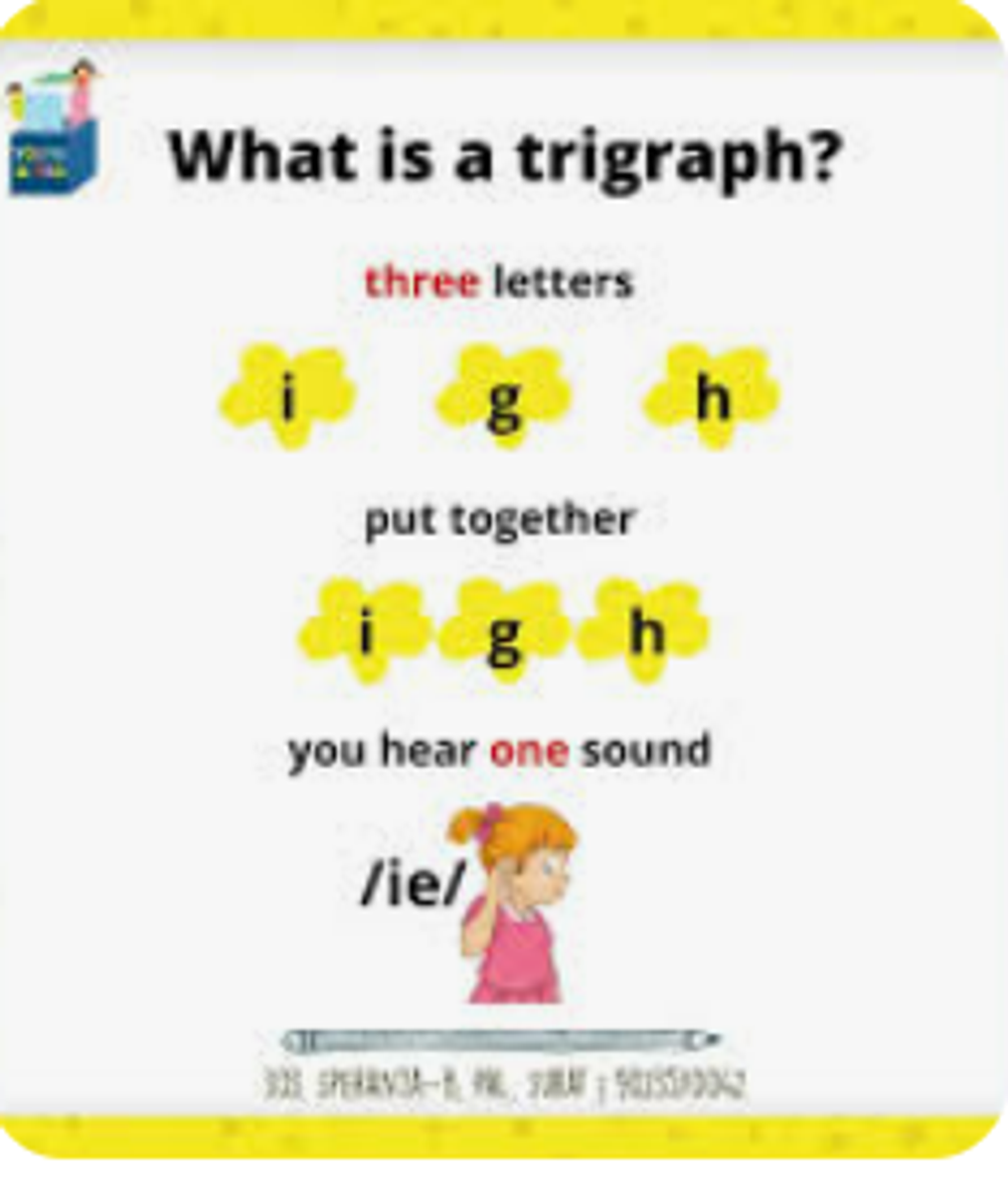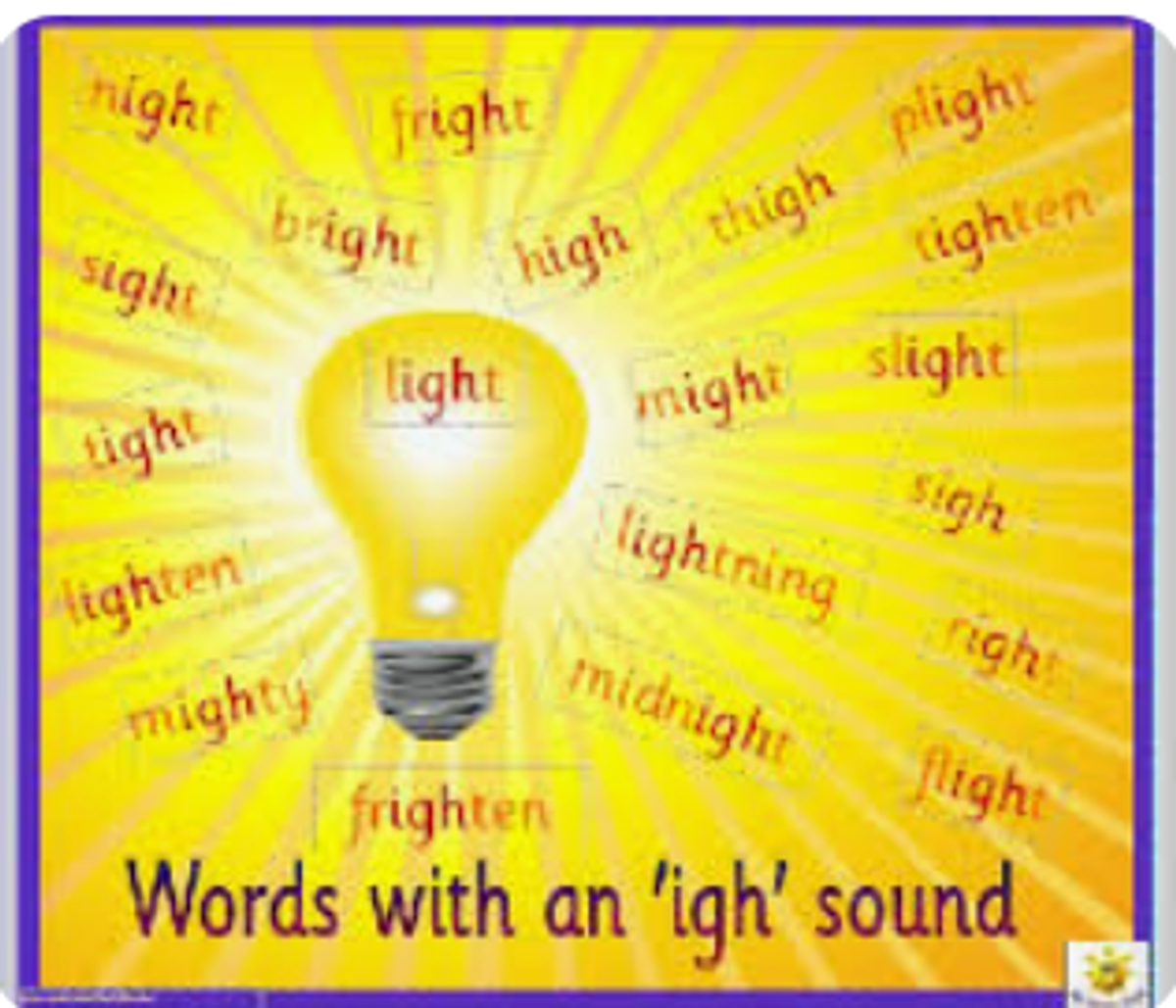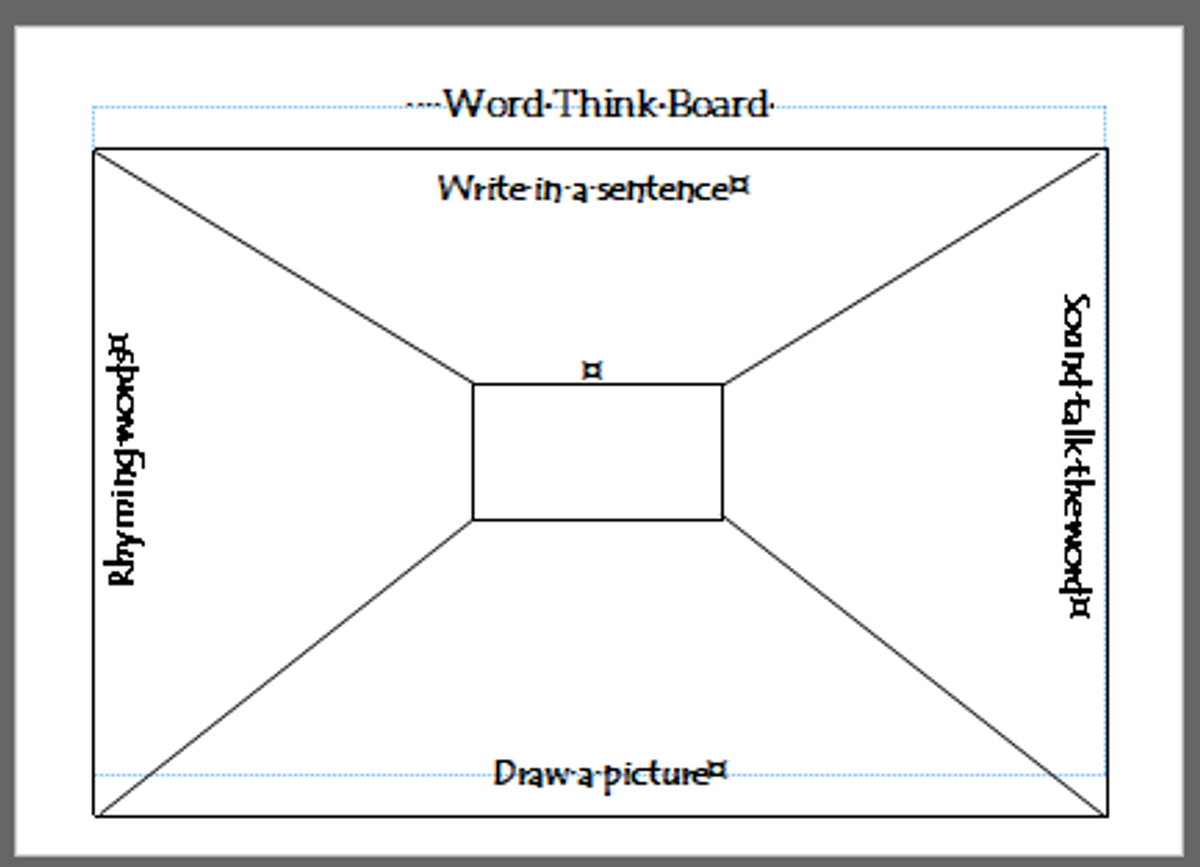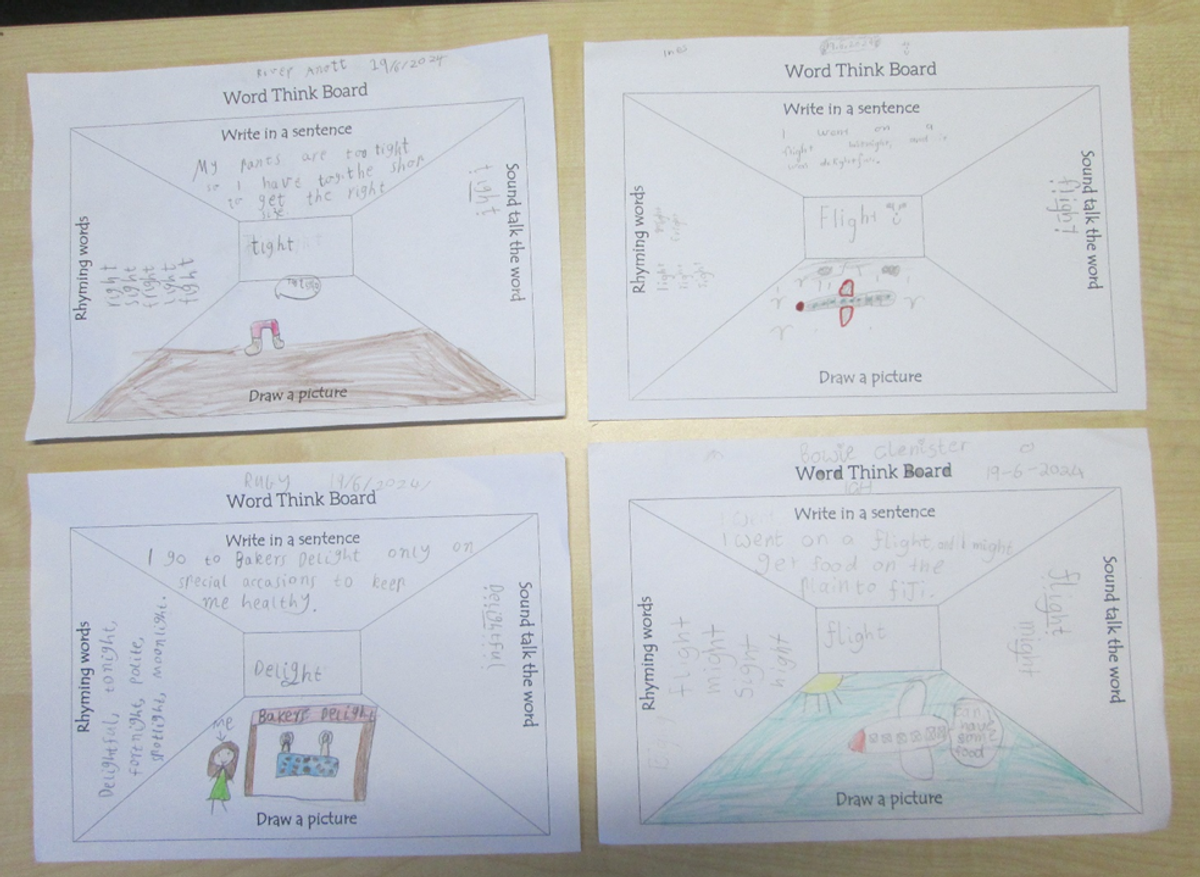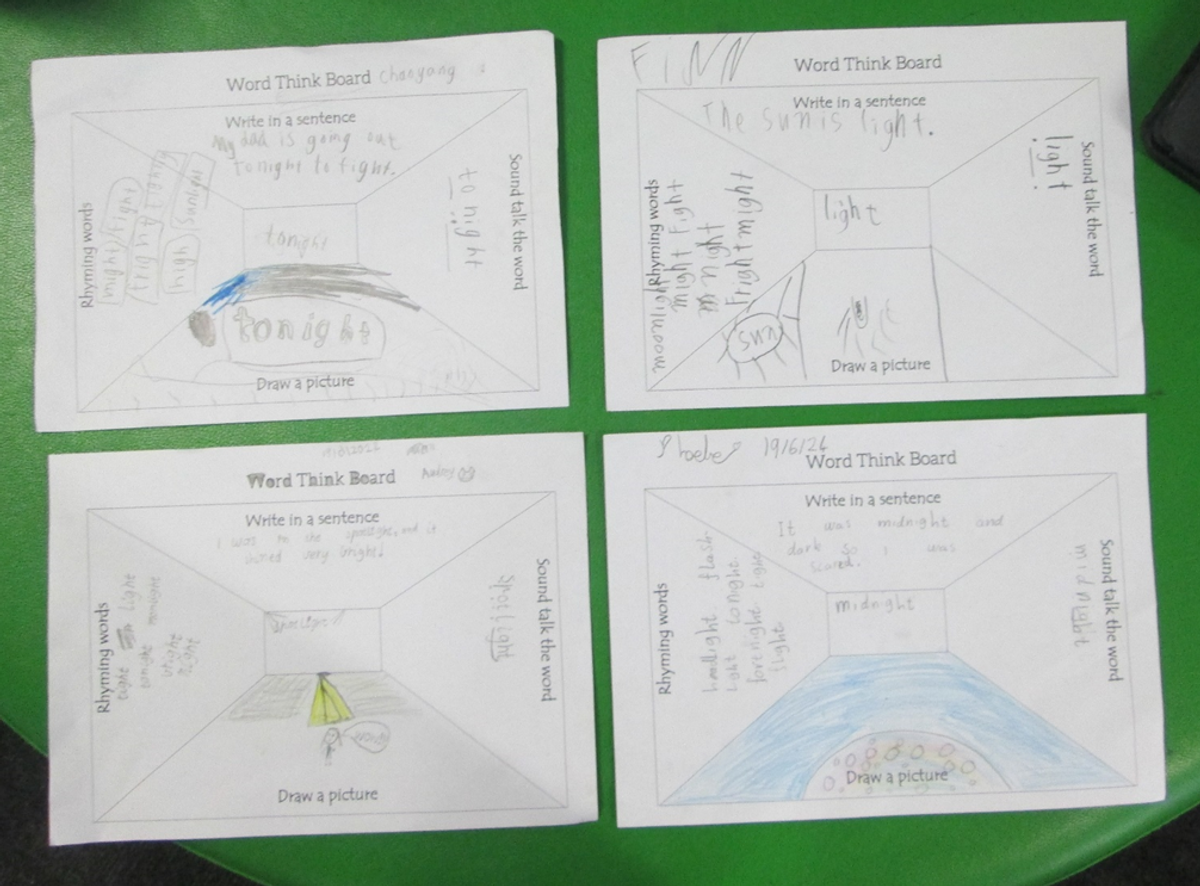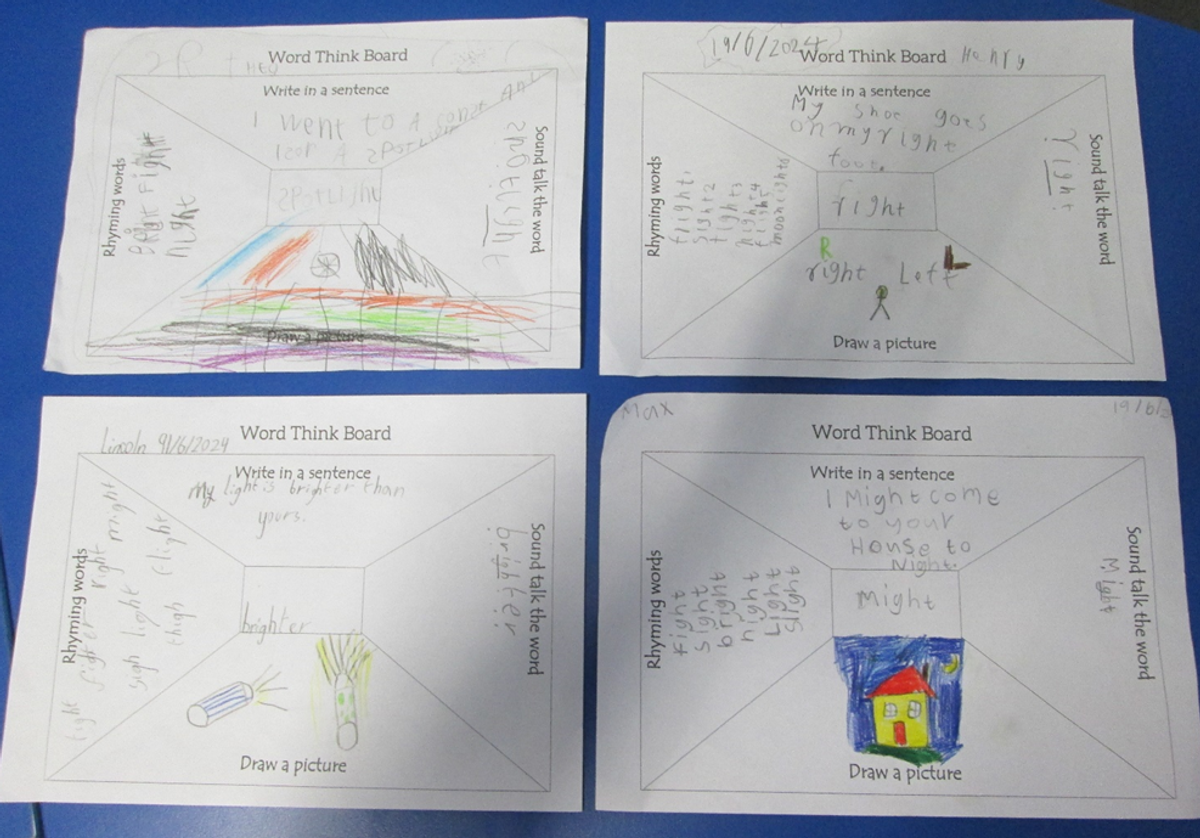Year 2 Bulletin
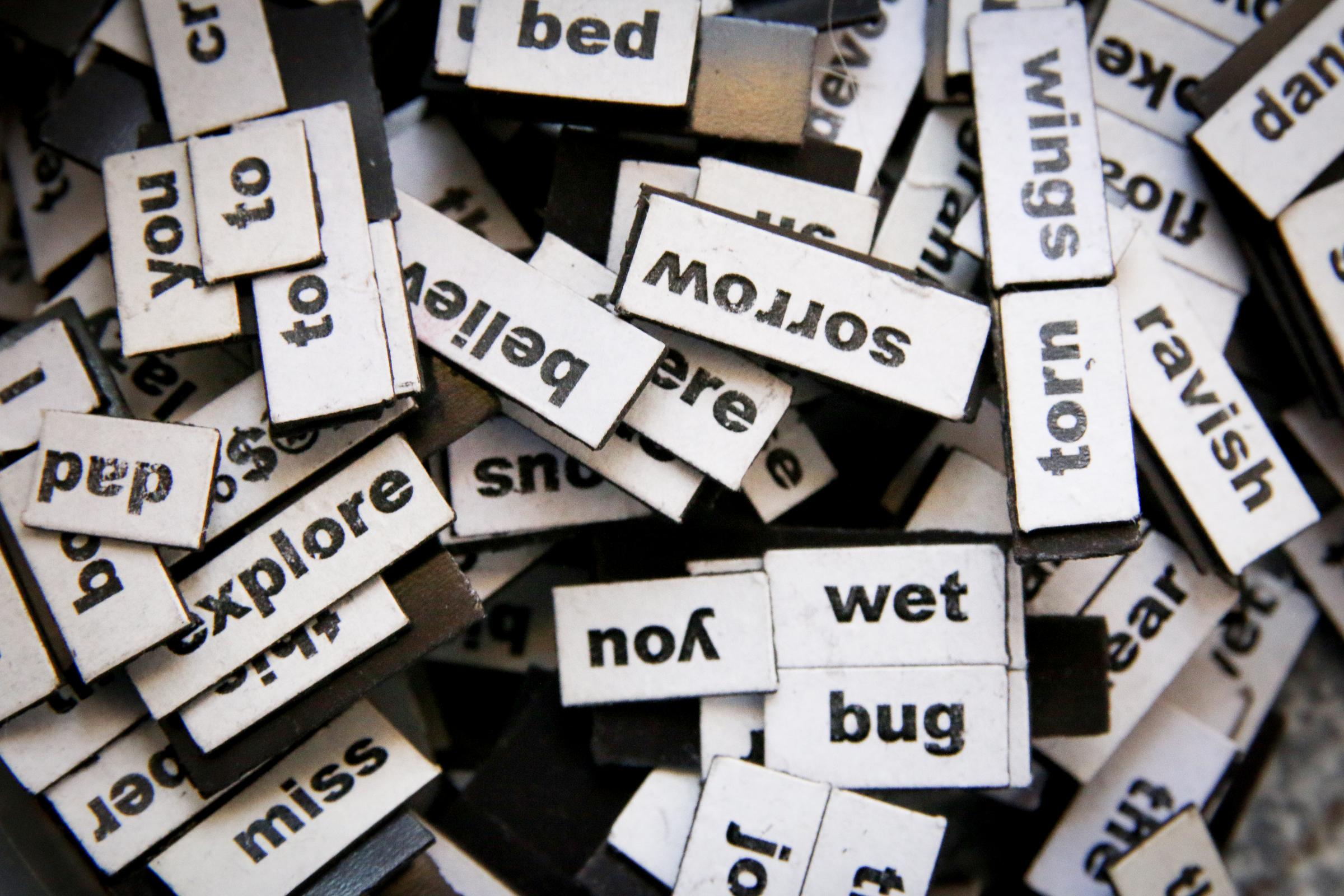
Language: Phonics and Word Knowledge
Understand how to use digraphs, trigraphs, long vowels, blends, silent letters and syllabification to spell simple words including compound words.
Learning Intention: To identify the groups of letters and their sounds in trigraphs.
Learning experience overview:
- Words containing the ‘igh’ trigraph were read aloud for students to identify the similar sounds in each word long ‘i’ sound in bright/night/flight/fright
- Students ‘sound talked’ (single sounds are dotted underneath, trigraphs are underlined) each word(saying each sound in the word separately b….r….igh….t.
counting the sounds on their fingers, as they say the sounds - Words were written on mini whiteboards, as they sounded each word out
- This procedure was followed for similar words - light, flight, might, fright
Students complete the Word Think Board.
Their chosen word was written in the middle box, then students completed the other parts:
- ‘sound talking’ the word, highlighting the trigraph
- writing the word in a sentence
- listing rhyming words
- drawing a picture
Students need to be able to:
- Identify the trigraphs in words, with the understanding that a trigraph can be found at the beginning, in the middle or at the end of a word
- Break up a word into sounds, rather than individual letters
- Rebuild a word using trigraphs and letters, and record it
Prompts/questions/responses
- Helpful questions to ask when deciphering words:
- What sounds can you hear in the word?
- Can you ‘sound talk’ this word?
- Can you see any digraph/trigraphs in this word?
- What letters make this digraph/trigraph sound? Are they vowels or consonants?
- What other words do you know that contain that same sound?
- Are those other words with the same sound, spelt in the same way?
- Can you think of any rhyming words for this word?
What you can do now to continue the learning at home from this experience:
- Continue to encourage your child/ren to write for pleasure at home, and share it with you.
- When reading, point out digraphs/trigraphs, ask if they are consonant digraphs or vowel digraphs or trigraphs
- Find objects around the home whose names contain digraphs/trigraphs
- Ask them to write your shopping list – look for digraphs/trigraphs
- Play rhyming games
- Make up silly sentences with the same digraphs/trigraphs
e.g. The bright light at midnight gave the firefighter such a fright.
Mrs Evans and Emma
Year 2 Team

